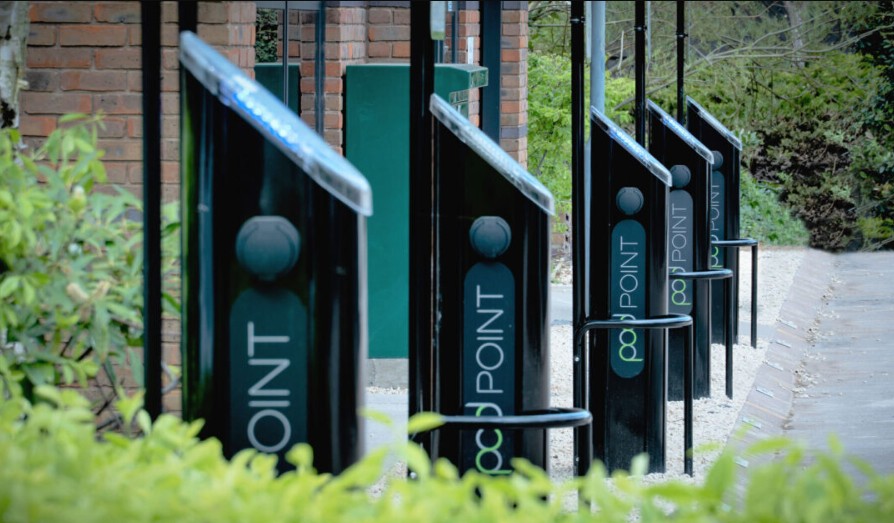In April 2025, Rachel Reeves’ BIK tax changes will transform how UK businesses handle employee perks, particularly company cars. With a strong push toward electric vehicles (EVs) and hybrids, the government is offering financial incentives for greener choices. These changes will impact both employers and employees, reducing tax burdens for low-emission vehicles while increasing costs for higher-emission ones. This article will explore what the new rules mean for your business and how you can adapt to make the most of these tax changes.
What Exactly Is Benefit-in-Kind (BIK) Tax?
Benefit-in-Kind (BIK) tax is a topic many businesses shy away from until it’s time to report. Simply put, it’s a tax employees pay on perks or benefits they receive from their employer, and those benefits can range from a company car to gym memberships, and even office snacks!
For company cars, the tax is determined by the value of the benefit (i.e., the car’s list price and its CO₂ emissions). This is where it gets interesting: in April 2025, Rachel Reeves’ BIK tax changes will impact your tax liabilities, pushing businesses to rethink their vehicle fleet strategies, particularly when it comes to high-emission cars versus electric alternatives.
Why Are the 2025 BIK Tax Changes Important for Employers and Employees?
With the UK government’s commitment to achieving net-zero emissions by 2050, the 2025 BIK tax changes are designed to encourage businesses to adopt more sustainable practices, particularly when it comes to fleet vehicles. But what does this mean for you, as an employer or employee?

The Push Towards Electric and Hybrid Cars
- Lower Taxes for Greener Vehicles: Electric vehicles (EVs) and hybrids will benefit from significantly lower BIK rates, making them more attractive for businesses looking to reduce costs.
- A Major Shift in Taxation: Traditional vehicles with higher CO₂ emissions will face higher tax liabilities, creating a stronger incentive for businesses to switch to greener alternatives.
- Corporate Social Responsibility: By embracing these changes, businesses can enhance their image and position themselves as leaders in sustainability.
What Exactly Are the BIK Tax Changes for 2025?
Rachel Reeves’ BIK tax changes are part of a broader government push to meet environmental goals and reduce carbon emissions. But what specific changes should you expect, and how will they impact your business?
The BIK Tax Rates for Company Cars – Breaking It Down
Here’s where the rubber hits the road. The key change is that the more environmentally friendly your company vehicles, the lower the tax rate you’ll have to pay. In 2025, we’re looking at:
- EVs: The tax rate for fully electric vehicles will start at 3% — a significant reduction from current rates.
- Hybrids: Hybrid vehicles will also benefit, though at a slightly higher rate of 5% to 14%, depending on their CO₂ emissions.
- Gas Guzzlers: Cars with higher emissions will see a rise in BIK rates, making the tax burden much steeper for less eco-friendly vehicles.
Check out this revised BIK Tax Rate Table for clarity:
| CO₂ Emissions (g/km) | BIK Tax Rate (2025) |
|---|---|
| 0 (Electric) | 3% |
| 1–50 | 5%-14% |
| 51–100 | 15%-29% |
| 101–150 | 30%-35% |
| 151–200 | 36%-37% |
| 200+ | 37% |
This table outlines the relationship between emissions and tax rates, showing that higher emissions lead to a greater tax. However, businesses can save significantly by making the switch to EVs, which will undoubtedly benefit both their finances and the environment.
How Do the 2025 Changes Impact Double-Cab Pick-Ups for Businesses?
If you’re operating in an industry where double-cab pick-up trucks are an essential part of your business, such as construction or agriculture, you’re probably wondering how the new rules will affect you.
In the past, double-cab pick-up trucks were classified as vans, allowing them to benefit from favorable tax rates. However, starting in April 2025, these vehicles will be taxed like company cars if they’re used for personal purposes, significantly increasing the tax burden.
Key Impacts for Pick-Up Trucks:
- Increased BIK Rates: Expect a higher tax rate for pick-ups, which could cost you hundreds or even thousands of pounds more per year.
- No More Van Allowances: Previously, double-cab pick-ups were eligible for van-related capital allowances. Under the new rules, these vehicles will be treated as cars, and businesses will no longer be able to claim those benefits.
- A Transition Period: Don’t panic — vehicles bought before April 2025 will continue to benefit from the old tax rules until 2029.
While this change might feel like a setback for some industries, it offers an opportunity to rethink fleet management and adopt more sustainable vehicle options.
How Can Your Business Prepare for the 2025 BIK Tax Changes?
Preparation is key. Don’t wait until the last minute to understand the tax implications of these changes. Take proactive measures to minimize your risks and maintain compliance.
Steps to Take Now:
- Evaluate Your Fleet: Review your current fleet and identify high-emission vehicles. Can they be swapped for greener alternatives like EVs or hybrids?
- Switch to Electric: Transitioning to EVs is one of the most effective ways to benefit from lower BIK rates. The government’s lower tax incentives for green cars are too good to ignore.
- Implement Salary Sacrifice Schemes: Employees who opt for salary sacrifice schemes to lease a company car can lower their taxable income and reduce their tax liability.
- Communicate with Your Employees: Educate your employees about the upcoming changes and how they might affect their tax situations, particularly if they’re benefiting from a company car.
Employee Benefits of the Changes:
- Lower Tax Bills: Employees driving electric or hybrid cars will face a significant reduction in their BIK tax.
- Greener, Cheaper Vehicles: Many employees will welcome the shift to electric cars due to the lower fuel and maintenance costs.
How Will the 2025 BIK Tax Changes Affect Different Sectors?
Not all sectors will feel the impact of these tax changes equally. Businesses that rely heavily on high-emission vehicles (such as construction, transport, and agriculture) will need to make adjustments. Let’s break it down.
Industries Most Affected:

- Construction: Companies with fleets of pick-up trucks may face higher costs due to the reclassification of double-cab pick-ups.
- Transport & Logistics: With the new incentives for EVs, transport companies will need to transition their fleets to lower-emission vehicles to benefit from tax savings.
- Agriculture: Farmers who use pick-ups for personal and work use will face similar challenges, especially if they’ve been taking advantage of tax perks for vans.
It’s important to remember that while these changes may increase costs in some areas, they also open up new opportunities. The long-term benefits of a greener fleet far outweigh the initial investment in new vehicles.
What Are the Potential Long-Term Benefits for Businesses Adopting the New Tax Rules?
While 2025 BIK tax changes may seem daunting in the short term, they can ultimately provide long-term benefits for businesses that make the right decisions today.
Long-Term Advantages of Going Green:
- Lower Operational Costs: Electric vehicles have lower fuel and maintenance costs, making them more cost-effective over time.
- Corporate Image: Businesses with green fleets can position themselves as environmentally conscious, which can improve customer loyalty and attract talent.
- Tax Savings: By switching to lower-emission vehicles, businesses can significantly reduce their tax liabilities, freeing up resources for other areas of growth.
- Employee Satisfaction: Employees who benefit from lower BIK rates will be more satisfied, reducing turnover and increasing morale.
Conclusion: How Can Your Business Thrive Under the 2025 BIK Tax Changes?
Rachel Reeves’ BIK tax changes for 2025 mark a new era of sustainable business practices in the UK. Although the shift to greener vehicles may come with some short-term costs, the long-term benefits are undeniable. By embracing electric vehicles, adopting salary sacrifice schemes, and planning, businesses can not only reduce their tax liabilities but also strengthen their brand and contribute to a more sustainable future.
The time to act is now. Will your business be ready for this green revolution?
Frequently Asked Questions (FAQs)
At what point will the 2025 changes to BIK taxation come into force?
The revised tax rates are scheduled to take effect starting April 6, 2025.
How do salary sacrifice schemes work with BIK tax?
A salary sacrifice scheme allows employees to reduce their taxable salary in exchange for a company car, which reduces both the employee’s and the employer’s tax liabilities.
Which vehicles will gain the most from the updated BIK tax rates?
Electric vehicles and hybrid cars will see the most significant reductions in BIK tax, with rates as low as 3% for zero-emission vehicles.
How can I avoid the higher tax rates for double-cab pick-ups?
Unfortunately, the new rules will apply to all pick-ups available for personal use. The best way to reduce your tax burden is to switch to an electric or hybrid vehicle.
Are there any exceptions to the new rules?
Yes, vehicles purchased before April 6, 2025, will be able to follow the previous rules until 2029.

Leave a Reply